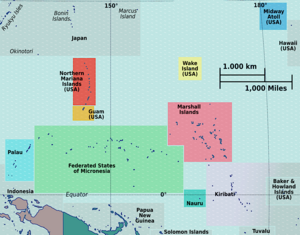
Malden Island, sometimes called Independence Island in the 19th century, is a low, arid, uninhabited atoll in the central Pacific Ocean, about 39 km2 (15 sq mi) in area. It is one of the Line Islands belonging to the Republic of Kiribati. The lagoon is entirely enclosed by land, though it is connected to the sea by underground channels, and is quite salty.
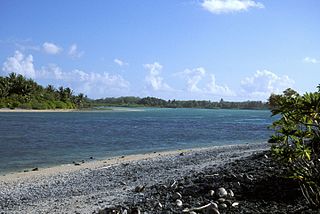
Nikumaroro, previously known as Kemins Island or Gardner Island, is a part of the Phoenix Islands, Kiribati, in the western Pacific Ocean. It is a remote, elongated, triangular coral atoll with profuse vegetation and a large central marine lagoon. Nikumaroro is about 7.5 km (4.7 mi) long by 2.5 km (1.6 mi) wide. The rim has two narrow entrances, both of which are blocked by a wide reef, which is dry at low tide. The ocean beyond the reef is very deep, and the only anchorage is at the island's west end, across the reef from the ruins of a mid-20th-century British colonial village, but this is safe only with the southeast trade winds. Landing has always been difficult and is most often done south of the anchorage. Although occupied at various times during the past, the island is uninhabited today.
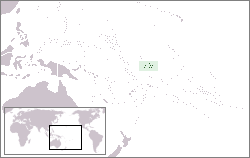
The Phoenix Islands, or Rawaki, are a group of eight atolls and two submerged coral reefs that lie east of the Gilbert Islands and west of the Line Islands in the central Pacific Ocean, north of Samoa. They are part of the Republic of Kiribati. Their combined land area is 28 square kilometres (11 sq mi). The only island of any commercial importance is Canton Island. The other islands are Enderbury, Rawaki, Manra, Birnie, McKean, Nikumaroro, and Orona.

Canton Island, previously known as Mary Island, Mary Balcout's Island or Swallow Island, is the largest, northernmost, and as of 2020, the sole inhabited island of the Phoenix Islands, in the Republic of Kiribati. It is an atoll located in the South Pacific Ocean roughly halfway between Hawaii and Fiji. The island is a narrow ribbon of land around a lagoon; an area of 40 km2 (15 sq mi). Canton's closest neighbour is the uninhabited Enderbury Island, 63 km (39 mi) west-southwest. The capital of Kiribati, South Tarawa, lies 1,765 km (1,097 mi) to the west. As of 2015, the population was 20, down from 61 in 2000. The island's sole village, Tebaronga, is located on the northwest point, below the airstrip.

Starbuck Island is an uninhabited coral island in the central Pacific, and is part of the Central Line Islands of Kiribati. Its former names include "Barren Island", "Coral Queen Island", "Hero Island", "Low Island", and "Starve Island".

Enderbury Island, also known as Ederbury Island or Guano Island, is a small, uninhabited atoll 63 km ESE of Kanton Island in the Pacific Ocean at 3°08′S171°05′W. It is about 1 mile (1.6 km) wide and 3 miles (4.8 km) long, with a reef stretching out 60–200 metres. Forming a part of the Canton and Enderbury Islands condominium from 1939 to 1979, the island is now a possession of the Republic of Kiribati.

The Canton and Enderbury Islands consist of the coral atolls of Canton Island and Enderbury in the northeastern part of the Phoenix Islands, about 1,850 miles (3,000 km) south of Hawaii in the central Pacific Ocean.

The Phoenix Islands Settlement Scheme was begun in 1938 in the western Pacific Ocean and was the last attempt at human colonisation within the British Empire.
Gerald Bernard Gallagher was a British government employee, noted as the first officer-in-charge of the Phoenix Islands Settlement Scheme, the last colonial expansion of the British Empire. Gallagher spent much of his career on Nikumaroro, an island notable for its connection to Amelia Earhart.

Birnie Island is a small, uninhabited coral island, 20 hectares in area, part of the Phoenix Island group, that is part of the Republic of Kiribati. It is located about 100 kilometres southeast of Kanton Island and 90 kilometres west-northwest of Rawaki Island, formerly known as Phoenix Island. It lies at 03°35′S171°33′W. Birnie Island measures only 1.2 kilometres (0.75 mi) long and 0.5 kilometres (0.3 mi) wide. There is no anchorage, but landing can be made on the lee shore.

Winslow Reef is an underwater feature of the Phoenix Islands, Republic of Kiribati, located 200 kilometres (120 mi) north-northwest of McKean Island at 01°36′S174°57′W. It is the northernmost and westernmost feature of the Phoenix Islands, not counting the outlying Baker and Howland Islands. It has a least depth of 11 m (36 ft). The reef is about 1.6 km (1 mi) long east–west, and about half that wide. The bottom is pink coral and red sand.

Carondelet Reef is a horseshoe-shaped reef, presumably a submerged atoll formation, of the Phoenix Islands, also known as the Rawaki Islands, in the Republic of Kiribati. It is located 106 kilometres southeast of Nikumaroro, at 05°34′S173°51′W, and has a least depth of 1.8 metres (5.9 ft). It is reported to be approximately 1.5 kilometres (0.9 mi) in length. The sea occasionally breaks over it.

Manra, is one of the Phoenix Islands in the Republic of Kiribati. It lies at 4°27′S171°16′W. longitude, and has an area of 4.4 km2 (1.7 sq mi). and an elevation of approximately six metres. Together with the seven other Phoenix Islands, it forms part of the Phoenix Islands Protected Area,. Charles Darwin visited the island during his five-year voyage (1831-1836), following which in 1842 he published an explanation for the creation of coral atolls in the South Pacific.

Orona atoll, also known as Hull Island, is one of the Phoenix Islands in the Republic of Kiribati. It measures approximately 8.8 km (5 mi) by 4 km (2 mi), and like Kanton, is a narrow ribbon of land surrounding a sizable lagoon with depths of 15–20 metres (49–66 ft). Numerous passages connect the lagoon to the surrounding ocean, only a couple of which will admit even a small boat. Total land area is 3.9 km2 (2 sq mi), and the maximum elevation is nine metres.
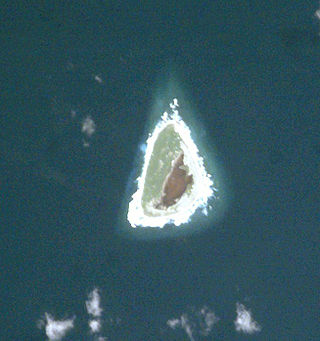
Rawaki is one of the Phoenix Islands in the Republic of Kiribati, also known by its previous name of Phoenix Island. It is a small, uninhabited atoll, approximately 1.2 by 0.8 kilometres in size and 65 hectares in area, with a shallow, brackish lagoon that is not connected to the open sea. It is located at 3.721°S 170.712°W.
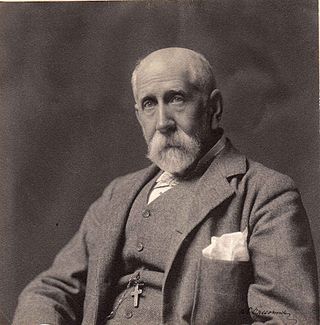
John T. Arundel was an English entrepreneur who was instrumental in the development of the mining of phosphate rock on the Pacific islands of Nauru and Banaba. Williams & Macdonald (1985) described J. T. Arundel as "a remarkable example of that mid-Victorian phenomenon, the upright, pious and adventurous Christian English businessman."

The Phoenix Islands Protected Area (PIPA) is located in the Republic of Kiribati, an ocean nation in the central Pacific approximately midway between Australia and Hawaii. PIPA constitutes 11.34% of Kiribati's exclusive economic zone (EEZ), and with a size of 408,250 km2 (157,630 sq mi), it is one of the largest marine protected areas (MPA) and one of the largest protected areas of any type on Earth. The PIPA was also designated as the world's largest and deepest UNESCO World Heritage Site in 2010.

White Swallow was an extreme clipper built in Boston in 1853 for the California trade.
Alfred Restieaux (1832–1911) was born in Paris, France, and came from a family of French descent. His grandfather was a French nobleman who escaped the guillotine during the French Revolution. At the age of 16 he migrated to Australia and later he travelled to South America and North America. He later became an island trader in the central Pacific. From 1867 to 1872 he had dealings with Ben Pease and Bully Hayes, two of the more notorious captains of ships and blackbirders that operated in the Pacific at that time.

The Coral reefs of Kiribati consists of 32 atolls and one raised coral island, Banaba, which is an isolated island between Nauru and the Gilbert Islands. The islands of Kiribati are dispersed over 3.5 million km2 (1.4 million sq mi) of the Pacific Ocean and straddle the equator and the 180th meridian, extending into the eastern and western hemispheres, as well as the northern and southern hemispheres. 21 of the 33 islands are inhabited. The groups of islands of Kiribati are:


